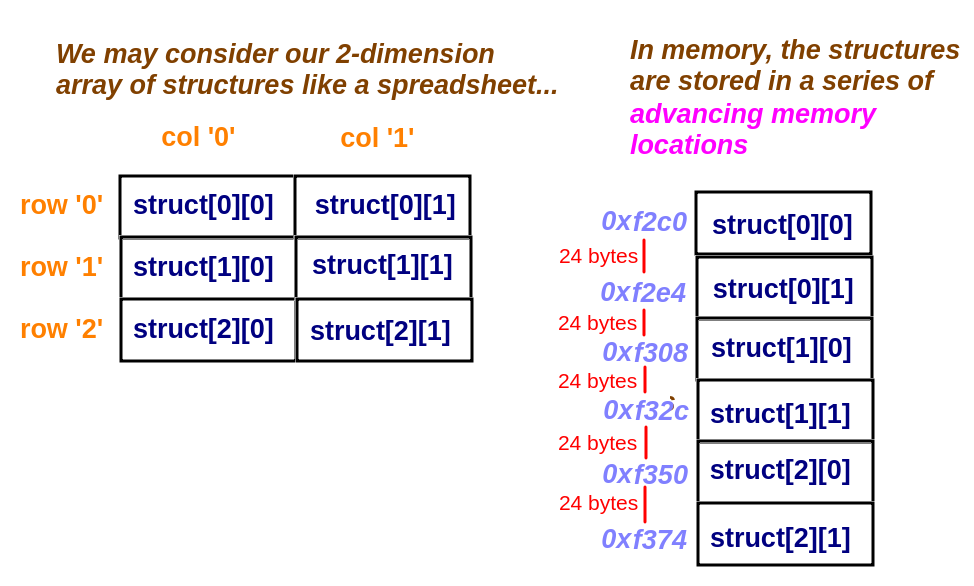Since the 'C' structure construct is so kewl <ahem>, what could be better than being able to establish ARRAYS of structures? Well, coding a 2D array of structures. Any time more than a few multi-element data groups are needed, maybe this data format will help your program's design.
/* pgm27 source */
#include <stdio.h>
#define MAXROW 3
#define MAXCOL 2
enum {RET_ERR = -1, RET_OK};
struct motorcycles { // POSITIONS of STRUCT elements has NO relation to how they are displayed
char name[25]; // meaning, below, we print the order SIZE, WEIGHT then NAME
int size;
float weight;
};
int main(void) {
int c; // VOODOO 'scanf()' fix
int entrycount;
int row;
int col;
struct motorcycles mc[MAXROW][MAXCOL];
printf("\nPlease enter %d lines.\n", MAXROW * MAXCOL);
printf("Each line: Motorcycle length MC weight MC name \n\n");
entrycount = 0;
for (row = 0; row < MAXROW; row++) {
for (col = 0; col < MAXCOL; col++) {
printf("Entry %d: ", ++entrycount);
scanf("%d %f %[^\n]", &mc[row][col].size, &mc[row][col].weight, mc[row][col].name);
while ((c = getchar()) != '\n' && c != EOF ); // VOODOO code for 'scanf()' fix
}
}
printf("\nResults:\n\n");
for (row = 0; row < MAXROW; row++) {
for (col = 0; col < MAXCOL; col++)
printf("mc[%d][%d].size: %d .weight: %.2f .name: %s\n", row, col, mc[row][col].size, mc[row][col].weight, mc[row][col].name);
}
printf("\n\n");
for (row = 0; row < MAXROW; row++) {
for (col = 0; col < MAXCOL; col++)
printf("Address of mc[%d][%d] -- %p\n", row, col, &mc[row][col]);
}
printf("\n");
return(RET_OK);
}

